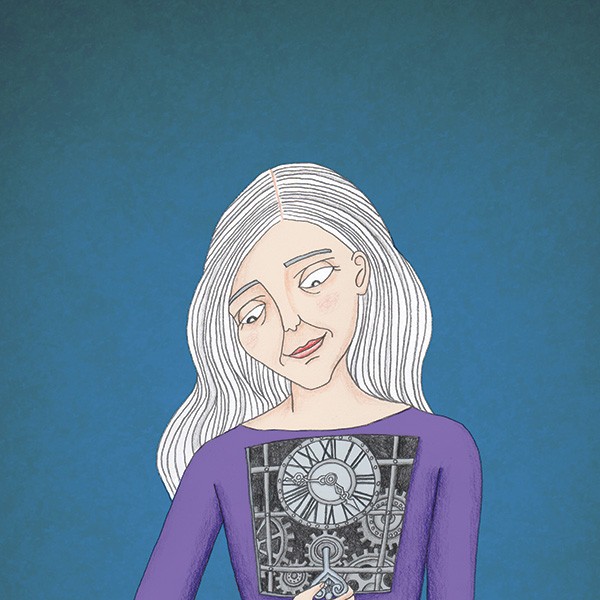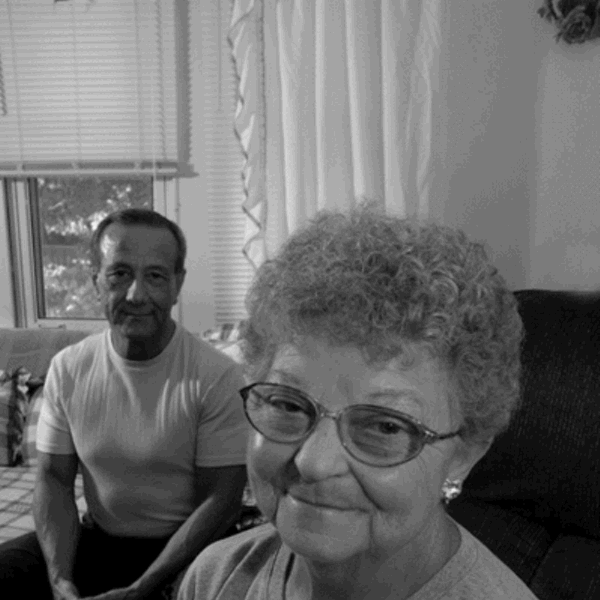At 83 years young, Madeleine Gough is in superb health. She lives by herself, carries a full schedule, and mentally, she’s at the top of her game. How is she able to maintain this lifestyle at her advanced age? No one ever told her she couldn’t. “I was always taught that I could do anything I wanted,” says Gough. “So, I did.”
In between managing all of the John Hancock offices west of the Mississippi, practicing voice, and earning a doctorate in metaphysics, Gough found time to get married, develop long-term friendships, and volunteer for causes that are important to her. At age 58, when most people consider retirement, Gough changed careers and became a hypnotherapist. Since then she has maintained a full-time practice seeing clients in her home office five days a week.
Gough’s combination of pursuits, interests, and activities would tire out the average 30-year-old, but they’re evidence that a large part of aging (and the limitations that come with it) is in our heads. Indeed, most of the biological decay we call aging is the body’s natural response to the convenience-driven, fast-food lifestyle of the 21st century.
“Seventy percent of aging is voluntary,” says Chris Crowley, co-author of Younger Next Year (2005, Workman Publishing). “Some things you’re stuck with—your basic maximum heart rate goes down a little each year, your skin and hair get drier, your libido goes down—but 70 percent of aging you can manage by how you live your life.” Things like how much you exercise, what you eat, how you stimulate your brain and how involved you are with other people, are the fundamental signals that run every cell in your body and brain. In fact, experts claim your “real age” is how old you are biologically based on how well you’ve maintained your body—not your age according to the calendar.
Eat for Life
Think of your body like an engine, a machine. The higher-octane fuel you put into it, the better it’s going to run. So consider what your internal machinery might look like two hours after you eat a double-double with fries and a chocolate milkshake: Painfully slow blood flow, hardened arteries, sludge-like movement. It’s not pretty!
Instead of dieting, which most people fail at anyway, just quit eating the obvious culprits and start loading up on fruits and vegetables. Sure, it’s easier said than done, but it is possible. “People who have four cups of fruits and vegetables a day can demonstrably lower their blood pressure and reduce their risk of cardiovascular disease,” says Ralph Felder, M.D., Ph.D., author of the Bonus Years Diet (2007, Putnam).
Felder’s book focuses on seven foods (red wine, dark chocolate, fruits, vegetables, garlic, fish, and nuts) that work both individually and synergistically to reduce the risk of heart disease. Eat these foods regularly, he claims, and you can add an average of six years to your life.
“The dark chocolate and fruits and vegetables lower your blood pressure. Garlic and nuts lower LDL cholesterol. Fish helps protect against cardiac arrhythmias, blood clotting, and inflammation,” says Felder. “Together these foods help protect the endothelium (the Teflon-like coating around your blood vessels) and reduce the risk of heart disease.”
And while eating heart-healthy foods won’t make you look like Paris Hilton, it will reverse the aging process internally. “With enough money, you can always look good on the outside,” says Felder. “Reversing the aging process internally is much more difficult.”
Get Moving
Research shows that most women gain one to two pounds every year after 30. Unfortunately, that’s not the only figure change that sets in as we age. Muscles get flabby (remember Aunt Edna’s wings?), balance and coordination get shaky, and jeans become increasingly snug. The good news: you can stave off—and even reverse—some of these changes if you work out and build resistance.
“If you exercise hard six days a week, plus a few other things, you can be functionally the same person at 50 almost until you die,” claims Crowley. “Hard exercise sends different messages to your body—messages that override the default to decay.”
Think of muscle like a ham steak with intramuscular marbling. The more you reduce that marbling, the better blood can circulate throughout your body and to your organs, where it’s needed most. What’s more, when your heart rate jumps to 60 percent, your blood chemistry changes, becoming anti-inflammatory instead of inflammatory, which helps prevent everything from heart disease and stroke to cancer and diabetes.
Just don’t forget to strength train. “Every year after 40, we lose an average of 0.3 to 0.5 percent of our bone mass,” says Crowley. Using your muscles to lift weights, perform squats, or do sit-ups stresses the bones in a controlled manner, preventing demineralization. And when your belly and back muscles are strong, you’re more likely to maintain your balance on an uneven sidewalk, to say nothing of the effects on your posture (and propensity to shrink as you get older).
Mind Games
Perhaps the best way to walk tall into your senior years is to fill yourself with positive energy and emotions. In fact, a growing body of research shows that putting a positive spin on any situation floods the body with feel-good chemicals that actually boost your immune system. Of course, negative energy has an equal and opposite effect, wreaking havoc on your health and taking years off your life.
















